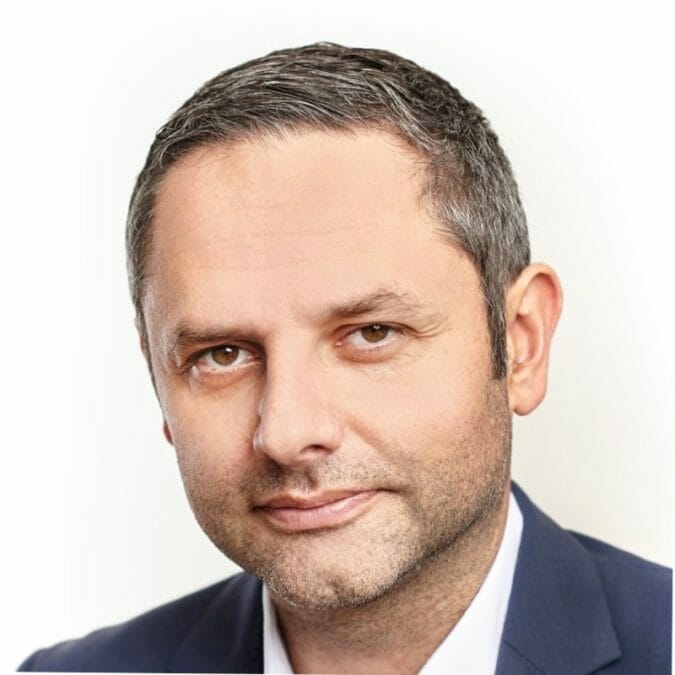The career of Tom De Ridder, CTO of customer experience management company Sitecore, has seen its fair share of twists and turns. While studying engineering at KU Leuven, De Ridder was engaged in making techno music, pursuing a dream of becoming a music producer as a full-time profession while working part-time as a programming professor post-graduation.
However, after friend Tim Pashuysen asked him for help with programming his architecture company’s website, the duo would end up co-founding content management platform Stylelabs, which was acquired by Sitecore in 2018. From here, De Ridder became fully invested in the software industry, and would become Sitecore CTO in March 2020.
What prompted you to decide to commit to tech as a career, shifting from working in music?
I have an engineering background, but was interested in electronic music for as long as I can remember. During university and a few years after that, I started producing and releasing my own techno tracks and although I had some moderate success, I realised that building software was essentially the same thing as building a techno track. The process usually follows these five steps:
1. Lay out the foundation: intro, break, drop, mini-break, 2nd drop, outro;
2. Experiment with different snippets, sounds and samples;
3. Iterate until you get it right;
4. QA (quality assurance) on the dancefloor;
5. Release it and make people happy!
So I started applying that to software development instead.
What challenges have you encountered as a CTO during the pandemic, and how have you managed to get over those hurdles?
Overall, Sitecore has been very quick to reorganise the team for remote working since the start of the pandemic. Of course, we had the benefit that the type of work our team does is largely online, which made it possible to transition smoothly to remote working, and we’ve had quite a bit of experience working with distributed teams already.
UK tech sector balances the pros and cons of remote working
In general, I would say productivity across the business, in areas like working on new product releases and the work that DevOps teams are doing, has not been substantially impacted. The thing that I personally find the hardest is the creative work in innovation. We have a culture of collaborating in front of a whiteboard, testing and challenging ideas and making quick progress by going back and forth with a small group of people. We had to adjust to using video conferencing for these creative meetings, which does have some barriers, but I believe we have found a way to do it effectively. That being said, I’m still looking forward to the time when we can meet in person again!
What does the SaaS-first strategy that’s in place at Sitecore entail?
We see an overwhelming ask in the market to provide more and more of our offering in a SaaS model. SaaS has obviously been gaining momentum for a while, and there are many benefits to our customers, including being easier to deploy and manage, more predictable and ensuring more accountability from your vendor.
The most important benefit I see is that it allows our customers to focus on their business value rather than operational or technical aspects. With my background coming from Sitecore’s Content Hub, we’ve always been SaaS from the start — Content Hub was born in the cloud, so to speak. Other Sitecore products have their roots in on-premise installs, and we are using the combined expertise and experience to bring all of that history to SaaS in the most efficient way. The idea is that, next to our traditional on-premise offering, we will soon offer our customers a full SaaS option as well.
Could you please expand on his perspective of blending engineering and product management, and the benefits this brings?
I was originally trained as a civil engineer in architecture, which is a discipline involving a continuous back and forth between function and technology. In my experience, you can dream up any building structure you like, but if you can’t find the technology to realise it, it will only be an academic exercise. The same goes for software development. You need to be able to go back and forth between the functionality you want to present to your customers and how you will make it a reality. There is no great UX without a lot of engineering work behind the scenes to make it run smoothly.
Why edge computing is forcing us to rethink software architectures
At the same time, engineering has certain boundaries on what can be done in any given circumstance, and functionality needs to work with that as well. If it all works well, it’s also no longer about the limitations but more about possibilities. New technology can inspire new use cases, or offer better performance for existing ones for example.
What does the rest of the year hold for you at Sitecore?
At Sitecore, we have very ambitious plans in the pipeline. We already have a broad product portfolio, covering everything from traditional content management systems, commerce, headless, personalisation, digital asset management and more, and we have lots of new things in store to continuously innovate on all of these products. Next to that, we have very ambitious plans in further accelerating our SaaS plans and offering more value to our customers from integrated use cases that bring all of these products together.







